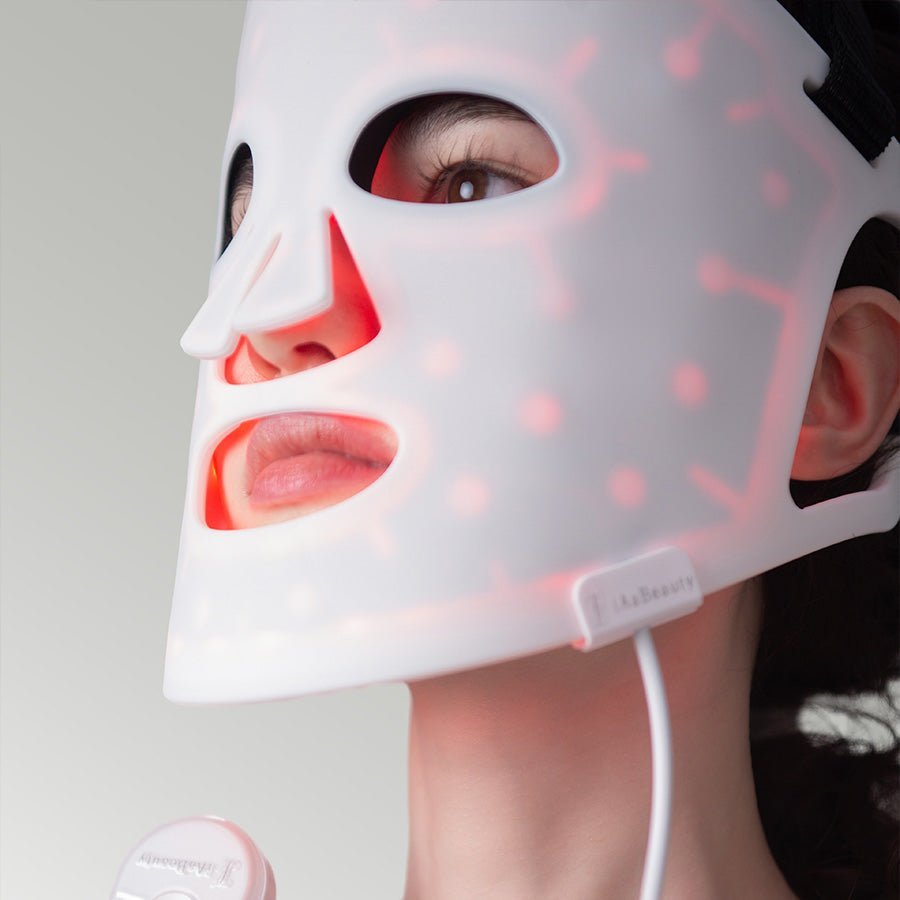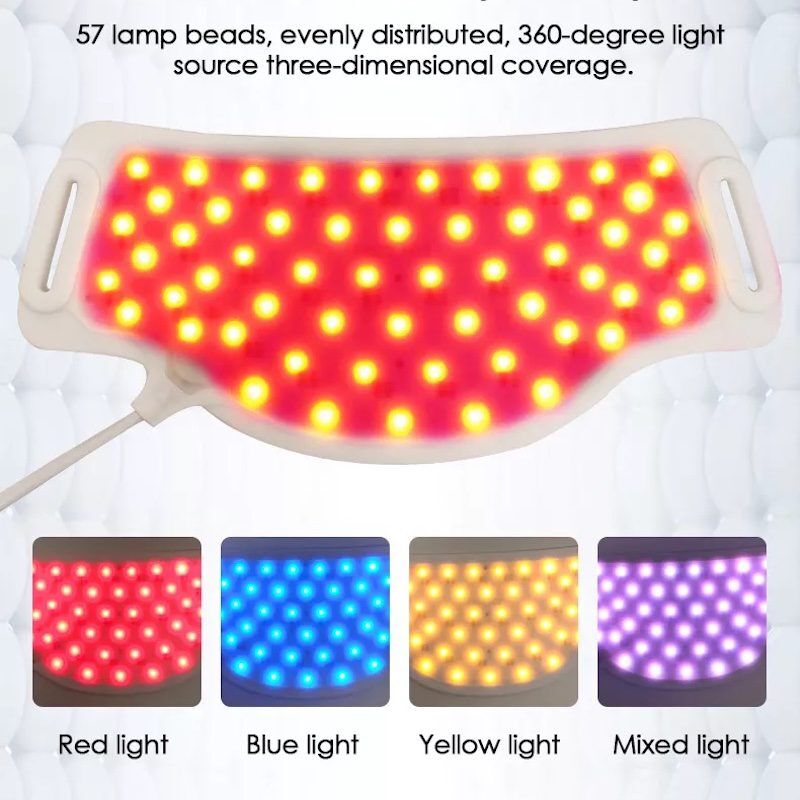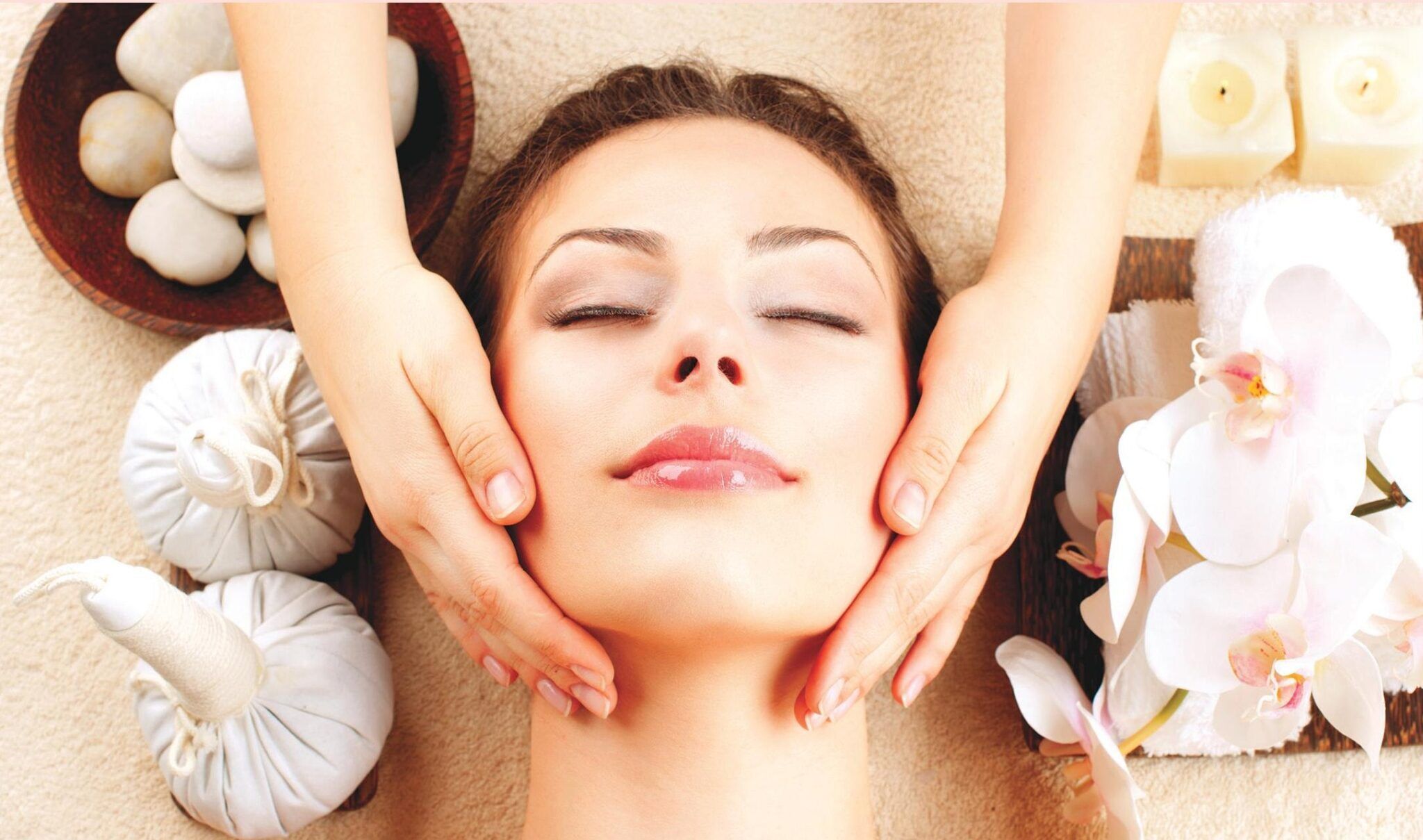LED light therapy has been trending in the skincare world for the last couple of years. Commonly, most LED therapy therapy devices only include red light therapy, while iAaBeauty Led therapy light devices combine Red Light Therapy(RLT) and Blue Light Therapy (BLT). Both types separately show visible results in treating wrinkles, pigmentation, acne, sunburst, and other skin diseases. However, not so many customers know, that the combination of red and blue light therapy can increase the effectiveness of the treatment.
How Does the Red Light Therapy Work?
The red light therapy was created after years of medical research by eliminating unnecessary rays from the entire spectrum and isolating a single wavelength of light. Red light therapy is a pure, narrow-wavelength, uniform non-thermal 633 nm light that activates the skin's photoreceptors and stimulates the skin's immunological function, which gives a long-lasting improvement after treatments. The results of this light are scientifically proven and tested. There are no harmful ultraviolet (UVA and UVB) and infrared rays in its spectrum.
In one study, 136 volunteers were randomly assigned into four treatment groups and were treated twice a week with either 610-650 or 570–850 nm light. After 30 sessions, clinical photography revealed visible changes in wrinkles and skin roughness, the volunteers had significantly improved skin complexion and skin elasticity.
Another research has proven, that Red Light Therapy can stimulate the healing, reduce pain and inflammation. During the research, the scientist supplied U.S. Navy crews with LED light therapy devices for the treatment of training injuries. The effect was visible, it showed more than a 40% greater improvement in musculoskeletal injuries and a 50% faster healing time for lacerations, compared to the group who didn’t use LED light therapy devices.
The main benefits of Red light Therapy:
- Stimulates the skin’s rejuvenation(renewal).
- Reduces inflammation.
- Improves skin elasticity.
- Reduces cell death.
- Stimulates wounds healing.
- No side effects and post-procedure period.
- Non-invasive, non-ablative, natural therapy.
In general, Red Light Therapy appears to have a wide range of applications of use in dermatology, especially in cases where skin rejuvenation, reduction of inflammation, stimulation of healing and reduction of cell death are needed. So It’s a great alternative for those who do not wish to perform laser or injectable procedures.
What Is Blue Light Therapy?
Blue Light Therapy is commonly used for treating acne, sun damage, and non-melanoma skin cancers. The 407 nm to 420 nm wavelength blue light penetrates the skin and kills the bacteria that cause acne.
For instance, one acne study involved 30 people with mild and moderate acne, and after eight 10- or 20-minute treatments over 4 weeks with a narrowband, blue light therapy was found to be effective in reducing the number of inflamed lesions (nearly 65% reduction) in subjects with mild to moderate acne.
Except that, Blue Light Therapy is often used to treat sunburns. It can be used to prevent skin cancer as a prophylaxis after sunburn and to remove both precancerous and cancerous skin lesions that have not spread to other parts of the body.
Is Red or Blue Light Better for You?
Even though Red and Blue Light therapy have good effects on the skin, the results of each light treatment are different. The main difference is the wavelength, red light therapy has a longer wavelength which can penetrate the skin and boost the production of collagen, skin rejuvenation, improves blood circulation, and reduces the depth of wrinkles. It is also good after injuries and surgeries on the face because it promotes cell regeneration and accelerates healing. In addition, red light therapy is often used to solve technological problems (e.g. hair loss). So Red light therapy is perfectly suited for people who want to get anti-aging effects.
Blue light therapy has a shorter wavelength but has faster oscillations than red light therapy. Although blue light therapy can’t penetrate the skin deeper than 0,07-1mm, it has a therapeutic effect on the skin. Blue light therapy works on the skin’s surface and has an antibacterial, antiseptic effect. Blue light therapy acts in the same spectrum as ultraviolet light, but, unlike it, brings not harm, but benefit. Blue light therapy can be used in the treatment of mild to moderate acne as part of complex therapy, reduce inflammation, and shrink pores. Moreover, blue light therapy is also effective for treating psoriasis, atopic dermatitis, and even eczema. So Blue Light Therapy is recommended for people who struggling with acne, redness, or any other breakouts. Both lights of LED therapy are said to help with wound healing, hyperpigmentation and
What Are The Incredible Benefits of Combining Red And Blue Light Therapy?
It is scientifically proven, that the combination of Red and Blue light therapy has numerous benefits for the skin.
Increase circulation:
The Red Light therapy can improve blood circulation in the skin by delivering more oxygen and nutrients to the skin cells, promoting cellular health and regeneration. Blue wavelengths have the same function. So together it can not only encourage blood flow but also promote the growth of new cells.
Acne treatment:
While Blue light therapy kills the bacteria, red light therapy lessens inflammation. So that by combining blue therapy light’s antibacterial properties and red therapy light’s anti-inflammatory properties, we can increase the effectiveness of treating mild and moderate acne.
In one study, LED light therapy was used for 24 patients with mild to moderate facial acne. The treatment with the combination of short-wavelength blue light therapy and long-wavelength red light therapy was carried out twice a week for 4 weeks. According to the final results, the amount of inflammatory acne decreased by 77.93%, and the amount of non-inflammatory acne decreased by 34.28%.
Another study which included 35 patients, used a home-use LED light therapy device. The patients had to use an LED face mask with mixed blue (420 nm) and red (660 nm) lights for 2.5 minutes twice a day for 4 weeks. The final results had shown, that after 12 weeks of the treatment, inflammatory acne significantly decreased by 77%.
Rosacea treatment:
Rosacea is a common inflammatory skin condition, that causes blushing and visible blood vessels. Previous research reported that after using mixed blue and red lights for 5 weeks, patients saw a reduction in symptoms such as burning and itching.
For the note, not all LED face masks have the Red and Blue lights combined regime. iAabeauty LED face mask, for example, has combined light, which is a great help to reduce acne and postacne scars.
What Are The Possible Risks Of Red and Blue Light Therapy?
The safety deriving from the use of LED light therapy devices encourages their increasing use for the treatment of many dermatological conditions. With correct use, red and blue light therapy doesn’t pose any serious long-term effects. However, there may be some minor adverse effects, such as:
- dry skin
- changes in skin color
- irritation and itchiness
- burning sensation
However, these are short-term effects, it goes away soon after treatment.
The Red and Blue Light Therapy separately or combined have good effects on the skin, you just need to choose the form depending on your skin concerns. It’s not a quick solution, you’ll probably need several treatments to see great results, but with a little bit of time and dedication, you’ll be able to achieve your skin goals.




